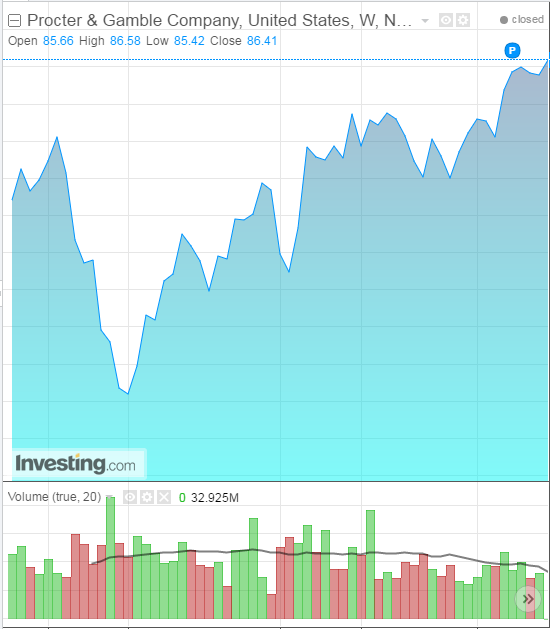by Clement Thibault
The Procter & Gamble Company (NYSE:PG), a global consumer packaged goods giant that manufactures and markets more than 100 internationally recognized brands including Crest, Gillette, Pampers and Tide, reports Q2 earnings on Tuesday, August 2, before the bell.

1. Revenue and Earnings Forecast
Procter & Gamble is one of the largest consumer staple companies in the world today. It operates in 180 markets globally and specializes in packaged goods ranging from cosmetics to family and household care products. The company is expected to report an EPS of $0.74 on 15.82B in revenue. This would represent a step back in the earnings for PG. Last July the company reported EPS of $0.98 per share. Additionally, P&G beat expectations in each of the last four quarters.
2. Negatives Last Quarter
As indicated by the expected drop in earnings, P&G has several negative factors working against it right now. First, growth in developing markets hasn’t been as strong as the company expected. Costs are expected to rise as well, with a boost in the effective tax rate, from 19% last year to 27% currently. The strong dollar hurting the profitability of sales abroad will come into play as well.
More important, the company continues to divest specific, less profitable segments. What began with the sale of 43 beauty brands to Coty (NYSE:COTY) for $12.5B during the summer of 2015 continued this past quarter with the sale of the Christina Aguilera fragrance to Elizabeth Arden (NASDAQ:RDEN) for an undisclosed sum.
3. Future Outlook
Obviously, Procter & Gamble recognized and is rectifying the mistake of relying on emerging markets. Consequently, it is focusing on a slim-down strategy.
Though this makes the past fiscal year rough on its bottom line and stock performance, refocusing on its core brands makes sense. P&G's core business is highly care oriented and many of these brands are internationally recognized—and respected.
Once the owner of 170 brands, Procter & Gamble is opting to keep approximately 100 brands, which recent numbers suggest account for 90% of revenue.The company is betting that smaller will mean a stronger, more durable business. But will the "shrink to grow" strategy pay off?
P&G has relied on price increases to try and stabilize sales in the past three quarters. That has provided a quick, short-term fix, but it isn't a viable long-term strategy.
With a P/E ratio of 28 and the real possibility of ending up with a smaller business over the short- and medium-term, investors ought to closely follow the earnings release for any clues to the viability of the company's new strategic direction. That being said, P&G is a dividend aristocrat, with a dividend payout history stretching back over 50 years, currently yielding 3.13%, a major selling point to investors.
Even with the lower bottom line of $0.74 EPS, the dividend appears to be safe. P&G's numbers still cover the $0.66 quarterly dividend; And the 89% payout ratio, while high, surely won't be a deterrent to the reliable distribution of Procter & Gamble's sought-after dividend.
